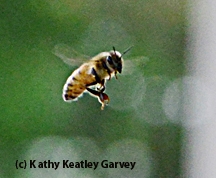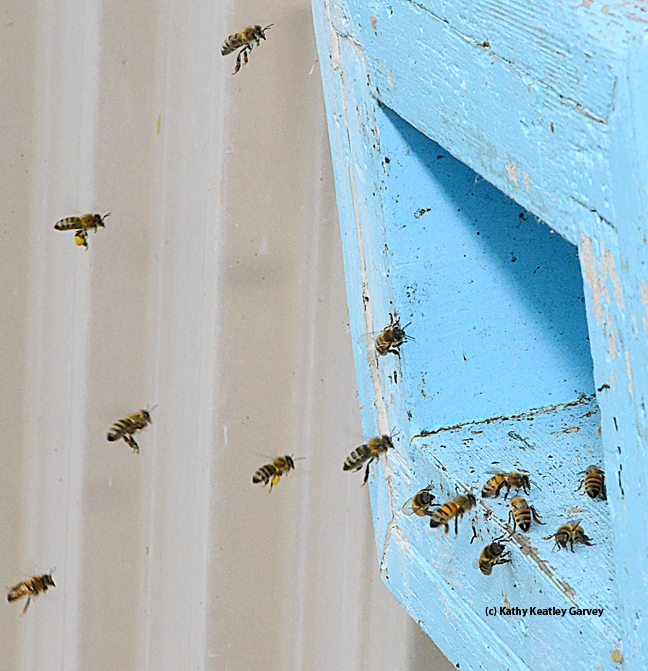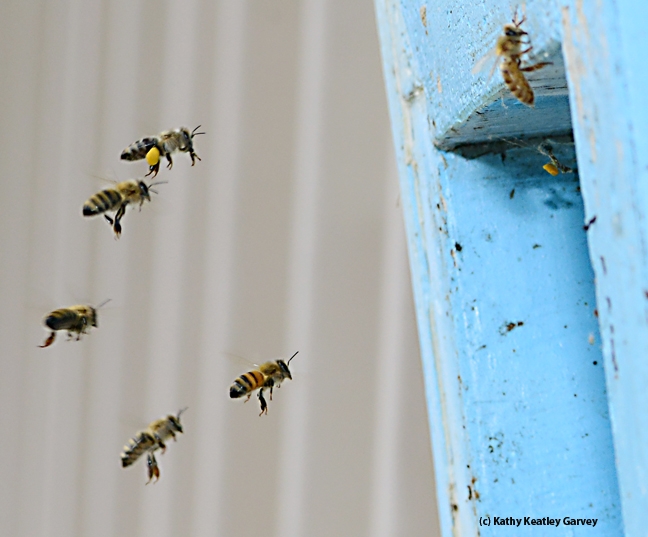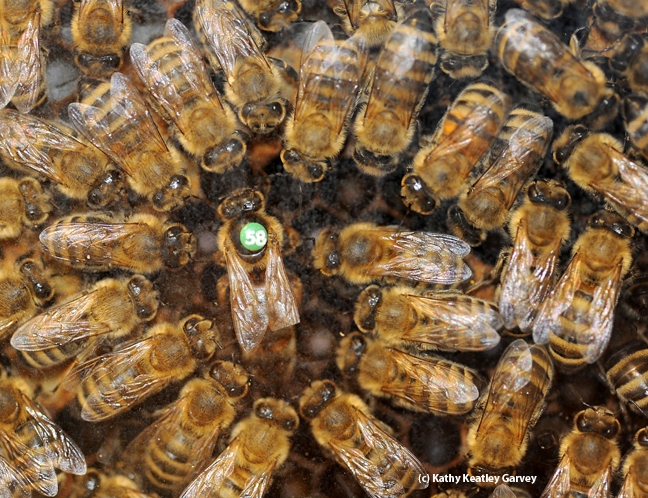
That is, honey bees heading home to their colony.
Many beekeepers, especially beginning beekeepers, like to watch their worker bees--they call them "my girls"--come home. They're loaded with pollen this time of year. Depending on the floral source, it may be yellow, red, white, blue, red or colors in between.
Below, the girls are heading home to a bee observation hive located inside the conference room of the Harry H. Laidlaw Jr. Honey Bee Research Facility on Bee Biology Road, University of California, Davis.
They're bringing in food for the colony: pollen and nectar. They also collect water and propolis (plant resin). This is a matriarchal society where females do all the work in the hive. The worker bees--aptly named--serve as nurse maids, nannies, royal attendants, builders, architects, foragers, dancers, honey tenders, pollen packers, propolis or "glue specialists," air conditioning and/or heating technicians, guards and undertakers.
The glassed-in bee observation hive is indeed a popular and educational attraction to watch the queen lay eggs (she'll lay about 2000 eggs a day during peak season), the comb construction, honey production, pollen storage and all the other activities. The sisters feed the colony, including the queen and their brothers (drones). A drone's responsibility is solely reproduction, and that takes place in mid-air when a virgin queen takes her maiden flight. After mating, he dies. Done. That's it.
Meanwhile, life continues inside the hive.
Attached Images:


